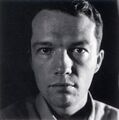Template:Selected anniversaries/August 27: Difference between revisions
No edit summary |
No edit summary |
||
| Line 1: | Line 1: | ||
<gallery> | <gallery> | ||
||1574: Bartolomeo Eustachi dies ... (born c. 1510) ... physician and anatomist whose name is given to the Eustachian tube. This narrow canal between the ear and the throat was discovered 2000 years earlier by Alcmaeon, but Eustachi was the first to fully describe it, in a treatise on the auditory organ. He was also first to describe the adrenal glands, and to make detailed studies of the teeth, including the first and second dentitions and tooth anatomy. His series of careful illustrations of abdominal and thorax structures, the nervous and vascular systems, muscles and bones were prepared as 47 copperplate engravings, but only 8 accompanied his Opuscula anatomica (1564) in his lifetime. Sadly for medical science, over a century passed before they were all published, in 1714. Pic. | |||
||1790: George Everest born ... geographer and surveyor. | ||1790: George Everest born ... geographer and surveyor. | ||
| Line 14: | Line 15: | ||
||1874: Carl Bosch born ... chemist and engineer, Nobel Prize laureate. | ||1874: Carl Bosch born ... chemist and engineer, Nobel Prize laureate. | ||
||1875: The element gallium was discovered by P.E. Lecoq de Boisbaudran. In an article in the Annales de Chimie in 1877, he said his search started 15 years earlier, but with inadequate resources. Even with a new laboratory (1863) he had no success until he realized he was using too little material, and in Feb 1874 started with 52 kg of a mineral from Pierrefitte mine. He finally isolated a tiny sample: “On August 27, 1875, between three and four at night, I perceived the first indications of the existence of a new element that I named gallium in honor of France (Gallia).” His first spectroscopic analysis of the tiny amount (he estimated 1/100 mg) of the prepared sample showed a previously unknown violet line at 417.0 indicating a new element. | |||
||1883: Rube Goldberg born ... sculptor, cartoonist, and engineer. | ||1883: Rube Goldberg born ... sculptor, cartoonist, and engineer. | ||
| Line 20: | Line 23: | ||
||1896: Léon Theremin born ... physicist and engineer, invented the Theremin. | ||1896: Léon Theremin born ... physicist and engineer, invented the Theremin. | ||
||1898: John Hopkinson dies ... physicist and electrical engineer who worked on the application of electricity and magnetism in devices like the dynamo and electromagnets. Hopkinson's law (the magnetic equivalent of Ohm's law) bears his name. In 1882, he patented his invention of the three-wire system (three phase) for electricity generation and distribution. He presented the principle the synchronous motors (1883), and designed electric generators with better efficiency. He also studied condensers and the phenomena of residual load. In his earlier career, he became (1872) engineering manager of Chance Brothers and Co., a glass manufacturer in Birmingham, where he studied lighthouse illumination, improving efficiency with flashing groups of lights. Pic: https://es.wikipedia.org/wiki/John_Hopkinson | |||
||1902: Meyer Lansky born ... American gangster. | ||1902: Meyer Lansky born ... American gangster. | ||
| Line 50: | Line 55: | ||
||1941: Antoni Łomnicki dies ... mathematician and academic. | ||1941: Antoni Łomnicki dies ... mathematician and academic. | ||
||1950: The BBC transmitted in Britain the first cross-Channel live television programme by microwave relay links celebrated the centenerary of the first cross-Channel telegraph by submarine cable. Although the working range for outside broadcast units of the time had been just 25 miles (40 km), a greater distance was made possible using a relay of microwave signals between five portable radio-link stations, able to send and receive microwave signals. Thus the signal was relayed 95-miles (153 km) for the two-hour programme originating in Calais, in Northern France, to London. The show presented the town of Calais "en fete", with a torchlight procession, dancing and a firework display from the Place de l'Hotel de Ville. | |||
||1956: The nuclear power station at Calder Hall in the United Kingdom was connected to the national power grid becoming the world's first commercial nuclear power station to generate electricity on an industrial scale. | ||1956: The nuclear power station at Calder Hall in the United Kingdom was connected to the national power grid becoming the world's first commercial nuclear power station to generate electricity on an industrial scale. | ||
Revision as of 11:05, 26 August 2018
1858: Mathematician Giuseppe Peano born. He will do pioneering work in mathematical logic and set theory.
1926: Chemist and composer George Brecht born. He will be a conceptual artist and avant-garde composer, as well as a professional chemist who will work as a consultant for companies including Pfizer, Johnson & Johnson, and Mobil Oil.
1934: Marie Curie, French-Polish physicist and chemist dies. She conducted pioneering research on radioactivity, discovering the elements polonium and radium.
1938: Mathematician and philosopher Edmund Husserl publishes new class of Gnomon algorithm functions based on transcendental consciousness as the limit of all possible knowledge.
2003: Mars makes its closest approach to Earth in nearly 60,000 years, passing 34,646,418 miles (55,758,005 km) distant.
2017: Dennis Paulson of Mars wins Pulitzer Prize for Best Reality Television Show.





